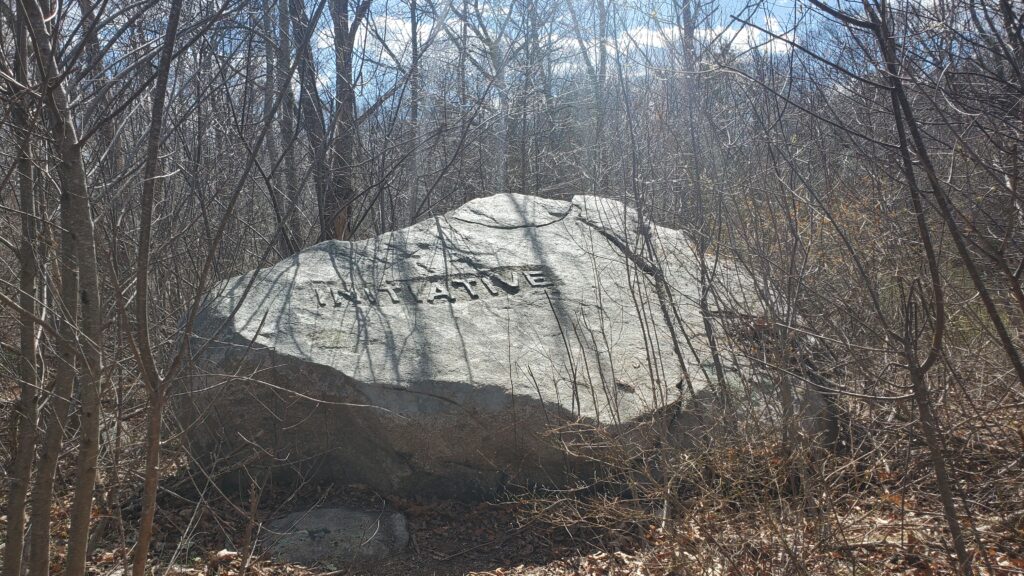Gloucester, Mass – Much of the interior of Cape Ann is wild and undeveloped, partially protected by reservations, but mostly left to the whims of nature and history. This vast territory is known as Dogtown. Little remains from the Colonial-era settlement which existed here until the 1830s. In the final years, only widows and “witches” stayed on, keeping dogs for protection. Thus, the name.
I recently read The Last Days of Dogtown by Anita Diamant, an excellent novel that captured the allure and the history of this intriguing place. So when I was covering Cape Ann for Lonely Planet’s guide to New England, exploring Dogtown was at the top of my to-do list.
Dogtown contains miles of hiking trails through the woodlands, but they’re mostly unmarked. Fortunately, the local Bookstore of Gloucester sells a map of walking routes for exploring Dogtown.

Babson Boulder Trail
My destination was the Babson Boulder Trail. The 2-mile loop meanders past some of three dozen namesake boulders, each inscribed with strange, stern instructions, such as ‘Use your head.’ Other one-word inscriptions laud virtues like Integrity, Courage and Work. The boulders are (part of) the legacy of
the eccentric 20th-century millionaire Roger Babson (who also founded Babson College), whose ancestors lived in Dogtown. Apparently Babson commissioned these boulders during the Great Depression, giving jobs to out-of-work stonecutters. The boulders are not on the map–nor are they right on the trail–so it was fun to come across them somewhat unexpectedly while exploring Dogtown.
Babson also documented the remains of the Dogtown houses, which were little more than cellars and foundations by that time. But I spotted some of the boulders with numerical inscriptions, which he created to mark the house sites. The ruins themselves are no longer visible.
I followed the main Dogtown Road trail to the “Dogtown Square,” from where the Babson Boulder Trail turns south to the Babson Reservoir. From there the Old Gravel Road loops back to the starting point. It was not difficult hiking, but navigation was not obvious (and the map was essential). It was peaceful and pretty, in a barren, early-spring way. But the appeal of this place is discovering a little piece of “forgotten” history–two pieces, actually–that have managed to survive the centuries.








